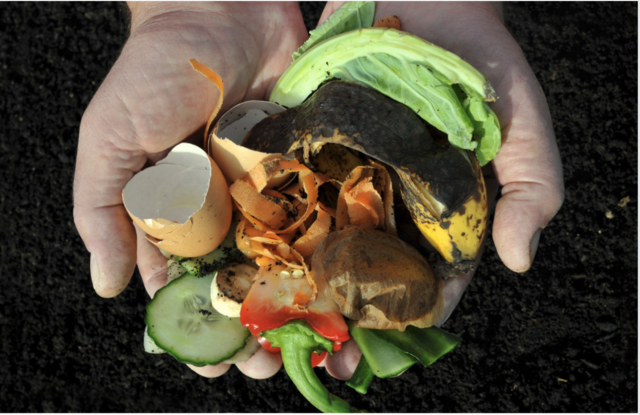Huge amounts of food are tossed out in our food provision system, from producer to seller to consumer, everyone could try to do more to reduce food waste in America. Food waste is such a enormous expense: a study by the NRDC revealed that $165 billion in food wasted annually by Americans, or about 20 lbs. per person per month. And 1.3 percent of American GDP is spent growing, processing and disposing of food that is never eaten. In Canada, the value of wasted food is estimated at $31 billion. And about 3% of Canadian greenhouse gas emissions come from wasted food.
Food waste presents four major issues:
- The resources that go into growing that food are also wasted when the food is thrown away
- Consumers are throwing away their hard-earned money when food goes bad
- People are still going hungry all over the US even though tons of perfectly good food is thrown away by producers, restaurants and grocery stores.
- Food that is not composted gets taken to landfills which when mixed in with plastic and decomposed without air turns into greenhouse gases.
Understanding the havoc that food waste causes might feel overwhelming but no fear, taking the time to learn what you can do to make the small changes in your everyday life is a great place to start.
Step One: Composting at home
Imagine a world where everyone composted their fruits and veggie waste. This small act would do wonders for the environment and greenhouse gasses
Step Two: Support companies that are trying to do their part to avoid food waste.
Some ideas that consumer brands should consider are:
-Standardized date labeling
-Consumer education campaigns
-Waste tracking and analytics
-Packaging adjustments
Step Three: Ask our local legislatures for help
Asking our local and national governments to design programs and interventions that take into account the barriers and opportunities across the production-consumption continuum will make systematic changes possible.
Government Rolls
- Promote—Create information campaigns that support reducing wasted food.
- Support—Provide grants and tax incentives to invest in food measurement and tracking, storage and recovery infrastructure.
- Develop programs/services—Provide technical assistance to food businesses to reduce wasted food.
- Prioritize—Be strategic in targeting wasted food with the biggest environmental footprint such as meat and dairy. This can leverage long-term diet shifts to lower impact foods.
- Incentivize and regulate—Enforce programs through incentives or fines.
- Advocate—Ask higher levels of government to implement standardized donation regulations and standardized date labeling across states.
Many of the groups we have listed at the bottom are working on just that, you can learn from them and support them by sharing them with your friends or donating to their efforts. Check back in with us as we share more with tips and tricks to help you in your mission towards a more sustainable life.
Further Resources
- ReFED: A Roadmap to Reduce U.S. Food Waste by 20 Percent-includes analysis and suggestions for economic development opportunities from wasted food.
- LeanPath Food Waste Prevention Systems
- Consumer education campaigns: UK WRAP’s Love Food Hate Waste and NRDC’s Save the Food
- Food business education campaigns: Oregon DEQ's Wasted Food Wasted Money
- Oregon DEQ resources: food environmental footprinting, Wasted Food Measurement Study, Strategy for Preventing the Wasting of Food
- Champions 12.3: The Business Case for Reducing Food Loss and Waste
- The West Coast Climate & Materials Management Forum: Climate Friendly Purchasing Toolkit
- Food Waste Reduction Alliance resources list
- University of Arkansas School of Law: Food Recovery: A Legal Guide
- Climate Connection
- Food Rescue
- Food Tank
- EPA

